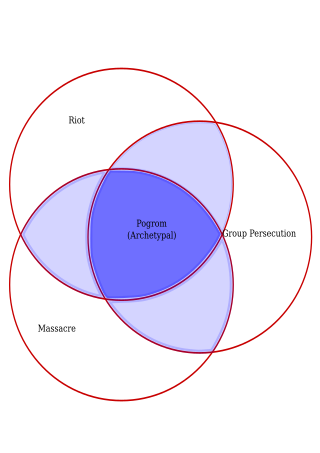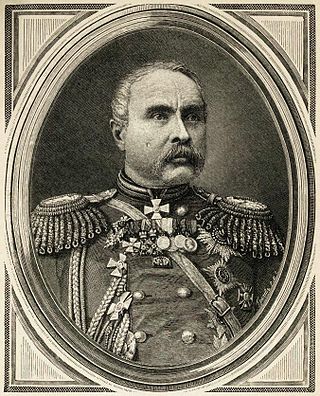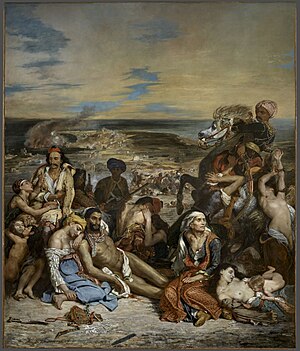
Genocide is the intentional destruction of a people in whole or in part.

The Boston Massacre was a confrontation in Boston on March 5, 1770, in which nine British soldiers shot several of a crowd of three or four hundred who were harassing them verbally and throwing various projectiles. The event was heavily publicized as "a massacre" by leading Patriots such as Paul Revere and Samuel Adams. British troops had been stationed in the Province of Massachusetts Bay since 1768 in order to support crown-appointed officials and to enforce unpopular Parliamentary legislation.
Mass killing is a concept which has been proposed by genocide scholars who wish to define incidents of non-combat killing which are perpetrated by a government or a state. A mass killing is commonly defined as the killing of group members without the intention to eliminate the whole group, or otherwise the killing of large numbers of people without a clear group membership.

The gram is a unit of mass in the International System of Units (SI) equal to one thousandth of a kilogram.

Crispus Attucks was an American whaler, sailor, and stevedore of African and Native American descent, who is traditionally regarded as the first person killed in the Boston Massacre, and as a result the first American killed in the American Revolution.

The St. Bartholomew's Day massacre in 1572 was a targeted group of assassinations and a wave of Catholic mob violence directed against the Huguenots during the French Wars of Religion. Traditionally believed to have been instigated by Queen Catherine de' Medici, the mother of King Charles IX, the massacre started a few days after the marriage on 18 August of the king's sister Margaret to the Protestant King Henry III of Navarre. Many of the wealthiest and most prominent Huguenots had gathered in largely Catholic Paris to attend the wedding.

Fort William Henry was a British fort at the southern end of Lake George, in the province of New York. The fort's construction was ordered by Sir William Johnson in September 1755, during the French and Indian War, as a staging ground for attacks against the French position at Fort St. Frédéric. It was part of a chain of British and French forts along the important inland waterway from New York City to Montreal, and occupied a key forward location on the frontier between New York and New France. In 1757, the French general Louis-Joseph de Montcalm conducted a successful siege that forced the British to surrender. The Huron warriors who accompanied the French army subsequently killed many of the British prisoners. The siege and massacre were portrayed in James Fenimore Cooper's novel The Last of the Mohicans.

A butcher is a person who may slaughter animals, dress their flesh, sell their meat, or participate within any combination of these three tasks. They may prepare standard cuts of meat and poultry for sale in retail or wholesale food establishments. A butcher may be employed by supermarkets, grocery stores, butcher shops and fish markets, slaughter houses, or may be self-employed.

The term genocidal massacre was introduced by Leo Kuper (1908–1994) to describe incidents which have a genocidal component but are committed on a smaller scale when they are compared to genocides such as the Rwandan genocide. Others such as Robert Melson, who also makes a similar differentiation, class genocidal massacres as "partial genocide".
In American history, salutary neglect was the 18th-century policy of the British Crown of avoiding the strict enforcement of parliamentary laws, especially trade laws, as long as British colonies remained loyal to the government and contributed to the economic growth of their parent country, England and then, after the Acts of Union 1707, Great Britain. The term was first used in 1775 by Edmund Burke.
The Parsley massacre was a mass killing of Haitians living in the Dominican Republic's northwestern frontier and in certain parts of the contiguous Cibao region in October 1937. Dominican Army troops from different areas of the country carried out the massacre on the orders of Dominican dictator Rafael Trujillo. As a result of the massacre, virtually the entire Haitian population in the Dominican frontier was either killed or forced to flee across the border. Many died while trying to flee to Haiti across the Dajabón River that divides the two countries on the island; the troops followed them into the river to cut them down, causing the river to run with blood and corpses for several days. The massacre claimed the lives of an estimated 14,000 to 40,000 Haitian men, women, and children. Dominican troops interrogated thousands of civilians demanding that each victim say the word "parsley" (perejil). If the accused could not pronounce the word to the interrogators' satisfaction, they were deemed to be Haitians and killed.

The Great Cat Massacre and Other Episodes in French Cultural History is an influential collection of essays on the cultural history of early modern France by the American historian Robert Darnton, first published in 1984. The book's title is derived from its most famous chapter which describes and interprets an unusual source detailing the "massacre" of cats by apprentice printers living and working on Rue Saint-Séverin in Paris during the late 1730s. Other chapters look at fairy tales, the writing of the Encyclopédie and other aspects of French early modern history.

Anti-communist mass killings are the politically motivated mass killings of communists, alleged communists, or their alleged supporters which were committed by anti-communists and political organizations or governments which opposed communism. The communist movement has faced opposition since it was founded and the opposition to it has often been organized and violent. Many anti-communist mass killing campaigns waged during the Cold War were supported and backed by the United States and its Western Bloc allies. Some U.S.-supported mass killings, including the Indonesian mass killings of 1965–66 and the killings by the Guatemalan military during the Guatemalan Civil War, are considered acts of genocide by some scholars.

The Dunoon massacre was a massacre that took place around Dunoon on the Cowal Peninsula, Scotland, on 3 June 1646. Men of the powerful Clan Campbell massacred men, women and children of the Clan Lamont.

This article provides a list of definitions of the term pogrom. The term originated as a loanword from the Russian verb громи́ть, meaning "to destroy, to wreak havoc, to demolish violently". The events in Odessa during Holy Week in 1871 were the first to be widely called a "pogrom" in Russian, and the events of 1881–82 introduced the term into common usage throughout the world.

The St Bartholomew's Day massacre in the provinces refers to a series of killings that took place in towns across France between August and October 1572. A reaction to news of the St. Bartholomew's Day massacre in Paris, total deaths are estimated as between 3,000 and 5,000, roughly equivalent to those incurred in Paris. These events severely impacted Huguenot communities outside their strongholds in Southern France; the deaths combined with fear and distrust of Catholic intentions resulted in a large wave of conversions, while many others went into exile.

Differing views of what caused the Armenian genocide include explanations focusing on nationalism, religion, and wartime radicalization and continue to be debated among scholars. In the twenty-first century, focus has shifted to multicausal explanations. Most historians agree that the genocide was not premeditated before World War I, but the role of contingency, ideology, and long-term structural factors in causing the genocide continues to be discussed.

Count Nikolai Ivanovich Yevdokimov (1804-1873) was a Russian infantry general who took part in the Russo-Circassian War. He played a very major role in the Circassian genocide.
Below is an outline of articles on the academic field of genocide studies and subjects closely and directly related to the field of genocide studies; this is not an outline of acts or events related to genocide or topics loosely or sometimes related to the field of genocide studies. The Event outlines section contains links to outlines of acts of genocide.












